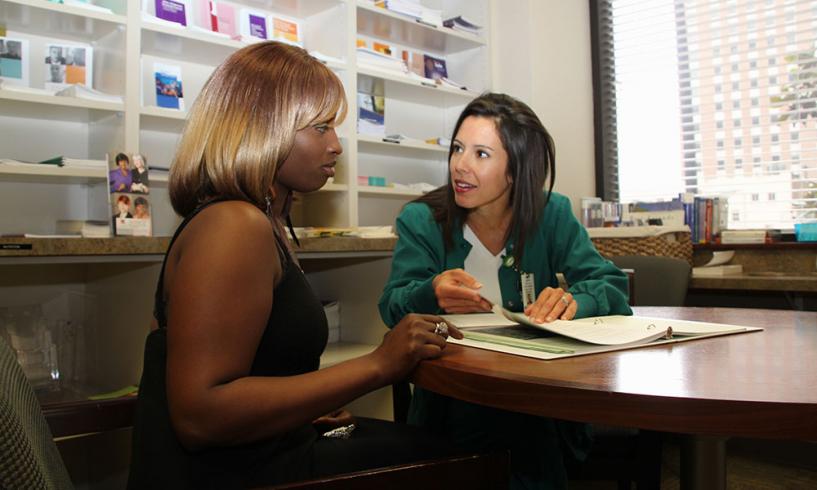The advice women get from expert panels differs on when and how often they should have mammograms. Many groups now advise a woman in her 40s to make an individual decision by talking with her healthcare provider about the pros and cons of mammography as well as her individual risk.
Having a conversation about screening decisions with a healthcare provider can be difficult, but a new online decision tool may make having that conversation easier. Breast Screening Decisions grew out of a 2009 blog post by Margaret Polaneczky, a gynecologist at Weill Cornell Medical College, when the U.S. Preventative Services Task Force (USPSTF) first recommended that average risk women in their 40s should not automatically be screened for breast cancer.
USPSTF based its recommendation on the fact that, although mammograms starting at age 40 do save lives across the population, they do so at the cost of false positives and overdiagnosis of cancers that would never have threatened a woman’s life if undetected. The online tool was created to help women understand the information and provide an evidence-based screening decision aid. Although other online tools also calculate risk, this tool also gives an estimate of the risks of screening and helps women incorporate their own values into the decision.
The tool is based on the data USPSTF used to formulate its 2009 recommendations and uses techniques that have been determined are the best ways to communicate with people about risk. It gives women in their 40s (it’s not for women who are older or younger) an individual breast cancer risk assessment by asking questions about their ethnicity, age at first menstrual period, personal history of breast abnormalities, and family medical history, along with other factors. It then uses easy-to-understand graphics to communicate what the risk is across a population of similar-risk women if they have regular mammograms.
The tool ends with a series of questions intended to clarify a woman’s values, such as “Am I willing to do anything to detect breast cancer as early as possible?” and “How worried am I about the possible harm caused by mammograms?” The tool also provides information about the potential harm of overdiagnosis and unnecessary biopsies, but it doesn’t quantify them.
The online tool isn’t designed to move women toward or away from a mammograms, but rather it helps them make an informed choice and offers something they can do on their own that they can then bring in to discuss with their healthcare provider.






